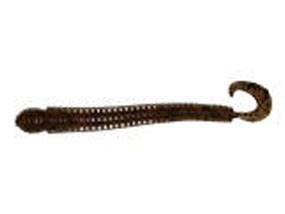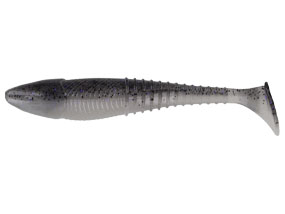Detroit River Plastics
By Lance Valentine

Plastic bodies on heavy jigs has become the standard presentation on the Detroit River and other large river systems over the past decade. Live bait is becoming much less common since plastics are available in countless size, shapes and colors, and of course, they never die!
Getting the correct size and shape of plastic is more important than color every day! Getting the plastic with the right profile, fall rate and fall angle should be your number one priority when you leave the dock every day. Find the BEST shape, then dial in on the color.

I carry 4 basic shapes of plastics when I hit rivers for spring walleye. They are a basic straight worm, a 4” shad body with a forked tail, a disc worm with ribbed body and twister tail and a thick body with a paddle tail. Each one imitates a different group of baitfish, has a different fall rate and a different fall angle.

Imitating what walleye are feeding on is a prime consideration when picking a plastic body. Worms imitate small thin bait like eels, log perch and small minnows. Shad bodies are great imitators of shiners, small shad, alewives and other smaller minnows. Disc worms imitate larger minnow species like large shiners, smelt, small cisco. Thicker bodies with paddle tails are the first choice when imitating large bait fish, crawfish, sculpin, goby and other bottom dwelling bait with thick bodies and big heads.

Fall rate refers to how fast a plastic falls back to the bottom. Thinner plastic like worms fall very quickly back to the bottom since they offer very little water resistance. Shad bodies fall a little slower due to more bulk. Ribs and a twister tail make a disc worm fall slower still and the slowest fall belongs to the thick bodied bait with a paddle tail.
Fall angle refers the angle a plastic falls back to the bottom. Again, a thin worm falls straight down to the bottom. The extra size of a shad makes it fall almost straight back to the bottom, but it does “slide” downstream a little bit. When using a disc worm and a paddle tail body, the extra bulk and the action tail will make the plastic fall or “glide” downstream as it falls. Fall angle is a HUGE factor in getting the best plastic shape each day.
This season when you hit the river, concentrate on getting the right size and shape of plastic before you worry about color. Have each person in the boat start with a different shape until you can determine the best shape for the day.
![]() Download Coffee Hour Plus Notes
Download Coffee Hour Plus Notes